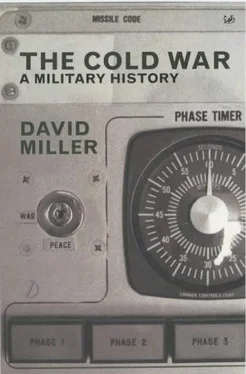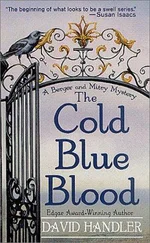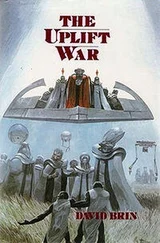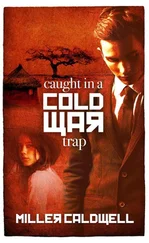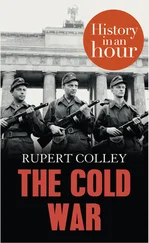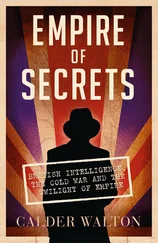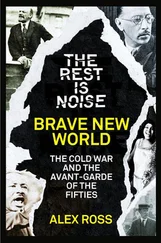Having received the military report, the three prime ministers and their foreign ministers met on 5–6 January 1949 and discussed a variety of topics, including how to achieve the rearmament of Denmark and Norway. Then on 14 January the US government announced publicly what it had already advised in private, namely that the priority in provision of arms would be to countries which joined the US in a collective defence agreement. The Nordic prime ministers and foreign ministers reconvened at the end of the month, and on 30 January they announced that it was impossible to reach agreement; the potential Nordic pact was thus consigned to history.
AT THE END of the Second World War by far the most powerful of the Western Allies was the United States. There were US garrisons all over Europe, including Austria, Belgium, Berlin, Czechoslovakia, France, Germany, Italy, the Netherlands, the UK and Yugoslavia, although manning levels were rapidly reduced wherever possible. The USA was hoping for a virtually total disengagement from Europe and sought to avoid any new commitments in the area, but in February 1947 the British dropped a bombshell when their foreign secretary, Ernest Bevin, informed the US government that the UK, ravaged by war, striving desperately to administer a huge empire, in the throes of the worst winter on record and to all intents bankrupt, would be compelled to end its military assistance to Greece from the beginning of April. Indeed, Britain’s true position was revealed when its government had to go cap in hand to Washington with a request for a $4.4 billion loan later in that year. Faced with the British fait accompli, the Truman administration felt it had no option but to take the British place in supporting Greece, thus initiating a policy of involvement in European affairs which has continued to this day.
The United States’ most natural ally in Europe was the United Kingdom, with which it had close blood ties and with which it had been closely allied in two world wars. In the early post-war years, however, there were several stresses in the UK–US relationship, in which a variety of factors was involved. One was financial, and included problems such as the sudden termination of the provision of military equipment under the ‘Lend-Lease’ scheme and achieving agreement on how to work out a precise figure for the British debt incurred to the USA during the 1939–45 period. The British also felt frustrated by the US denial of access to atomic weapons, not least because British scientists had given substantial help to their development in the Manhattan Project.
Palestine was also a problem. The British administered the territory under the terms of a pre-war League of Nations mandate, and in 1946–7 British troops there were seen to be forcibly turning back Jewish refugees from Europe – something which did not go down well with the politically active Jewish community in the USA. The USA also had very firm ideas on the continued British imperial retention of the Indian subcontinent, as well as an instinctive mistrust of Attlee’s left-wing government. Above all was the realization (perhaps more clearly in the United States than in the United Kingdom) that, while Britain, with its empire, had entered the Second World War Two as the strongest single power in the world, it had emerged from it as demonstrably weaker – politically, militarily and economically.
Despite these strains, the Americans and British worked closely together in many areas, particularly when dealing with the Soviet Union. Thus, when Soviet intransigence led to the break-up of the Allied Council of Foreign Ministers meeting in London on 15 December 1947 Bevin took the opportunity to outline to George Marshall a proposal for a two-tier defence system for western Europe which would include the USA. Marshall’s immediate response was that any talk of a US military guarantee was premature, to say the least, but nevertheless he agreed that talks about such a treaty could start, albeit confined initially to the English-speaking north-Atlantic nations: Canada, the UK and the USA.
Meanwhile, the Soviet leaders were extending their control to countries outside the Soviet bloc. Thus, at the same time that the Communist coup was taking place in Czechoslovakia (February 1948), Stalin dispatched a formal invitation to the Finnish president to visit Moscow to negotiate a treaty of friendship, similar to those which Hungary and Romania had recently been compelled to sign. The Finnish president was seventy-eight years old, his country was small and devastated by war; there was little choice but to sign.
As these Soviet–Finnish negotiations were taking place, the Norwegian government received information from several directions that Stalin’s next ‘offer’ of a friendship treaty would be to Norway. These sources were clearly authentic and were sufficiently serious for the Norwegian foreign minister to hold urgent talks with the American ambassador on 11 March 1948 to inform him of what he had heard. He saw the British ambassador on the same day, but, having passed on the same information he had just given to the American, he then went significantly further, telling the Briton that Norway would refuse any Soviet demands for concessions, and that if this meant that the Soviet Union would attack Norway, then so be it: Norway would resist. That said, he then formally asked the ambassador what help Norway might expect to receive from Britain if attacked. To which the ambassador could only respond that he would contact his government and await a reply.
When the Norwegian enquiry reached London, Bevin immediately communicated his views to George Marshall, describing how the possession of Norway would turn western Europe’s northern flank and give the Soviet fleet access to the Atlantic. He also admitted that, as things were, the Brussels Treaty powers were insufficiently powerful to protect themselves, let alone to make a realistic offer of help to Norway. He therefore proposed a regional ‘Atlantic Approaches Pact of Mutual Assistance’, in which all of the countries directly threatened by a Soviet move to the Atlantic could participate, including, the USA, the UK, Canada, Eire, Iceland, Norway, Denmark, Portugal, France and (when it had a democratic regime) Spain.
Marshall considered Bevin’s message, discussed it with President Truman, and replied to the British ambassador on 12 March, suggesting that talks should begin the following week. Bevin responded on 14 March, stating that a British delegation would arrive on 22 March and suggesting that Canada should be included in these further talks, which was agreed by both Washington and Ottawa within days. The British Cabinet considered the briefing to be given to their representative at these talks on 16 March, and thus, even as the Brussels Treaty was being signed on 17 March, the talks on its supersession were already under way. This did not mean that the Brussels Treaty had been superfluous; indeed, without it the US administration and Congress could well have doubted the European ability to rally together for the common good. The tripartite talks started in Washington on 22 March, and lasted for eleven days. [1] These talks were classified Top Secret, but as a junior British representative was the notorious spy Donald Maclean it seems probable that the Soviet leadership knew as much of what was discussed as did London, Ottawa and Washington.
Several events in late 1948 were of considerable importance to the eventual North Atlantic Treaty. First, in October the five Brussels Treaty foreign ministers announced their complete agreement on the principle of an Atlantic treaty and invited France to produce a first draft. On 11 November this document was duly presented to the Standing Committee of the Brussels Treaty, and the final draft was agreed by all five governments on 26 November and dispatched to Washington on 29 November, where on 4 December it was considered by the British and Canadian ambassadors and the US secretary of state. Considering the novelty, scope and importance of the subject, the usually stately progress of diplomatic negotiations and the involvement of five governments, this was quite breathtaking speed.
Читать дальше
